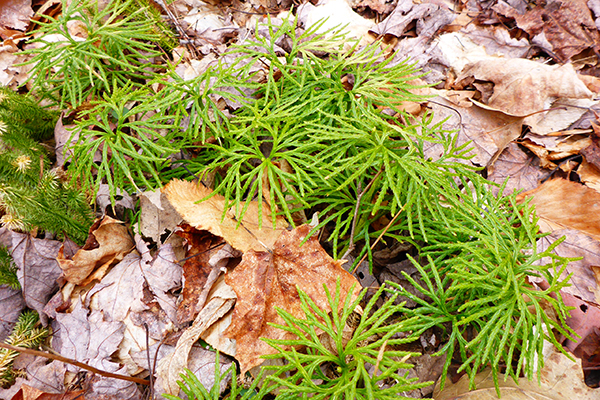Is it a tree? Maybe a moss? No, it’s a fern ally!
Have you ever noticed a low evergreen plant on the forest floor when autumn comes and the leaves have all fallen? It looks like a miniature tree:
This is commonly called ground pine or clubmoss, but both those names are deceptive. These plants are neither pines nor mosses. They’re more closely related to ferns (the technical term is “fern ally”). In the Catskill Mountains where I live, I tend to see 3 kinds:
1. Tree clubmoss – It looks like a little tree:
2. Running clubmoss – It has little runners that snake through the leaves and other forest floor debris:
3. Ground cedar – It has flattened needle sections like a cedar needle:
Ground pines are a welcome green in the otherwise brown color of late fall and early winter, when the green leaves of summer have fallen but snow is not yet upon us. You’ll often find ground pines in old fields that have grown up to woods. They compete well with other plants on these poor soils.
Back in the day, folks would pick clubmosses and make Christmas wreaths out of them. Unfortunately, these tiny plants grow really slowly. It can take 15 years for them to mature enough to reproduce. Even though they’re pretty, it’s better to leave them alone. Some prunings from a planted fir or spruce tree will make a much better wreath and won’t damage your woods.
Another historic use for clubmoss came from its spores, which grow on the brown “candles” on top of the plant. When dried, the spores can explode with a bright flash. They were used in early photography instead of flash bulbs, and they even found their way into some magic shows and fireworks. Again, because these plants grow so slowly and have such a hard time reproducing, it’s best not to try this yourself.









